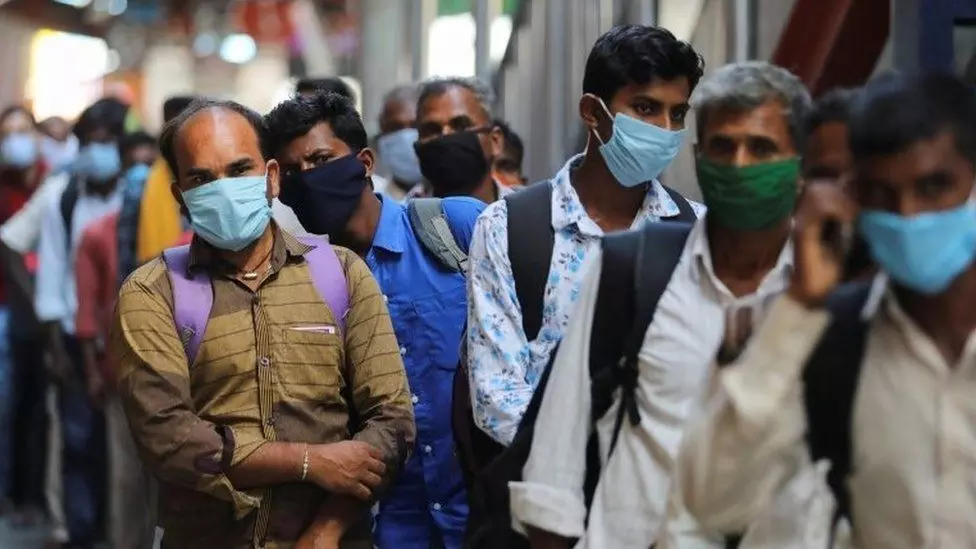H3N2 Influenza: India reports two deaths from Karnataka, Haryana
Primary symptoms include fever, chills, cough, breathlessness, and wheezing lasting for 7 days
By Newsmeter Network
Representational Image
Hyderabad: While the nation fears the H3N2 Influenza A virus, the the first death of H3N2 is reported by an 82-year-old from Karnataka.
Primary symptoms of the virus include fever, chills, cough, breathlessness, and wheezing lasting for seven days. So far, two persons have reportedly died. While one person died in Karnataka, another death was reported in Haryana.
The Union health ministry, Government of India, stated that an 82-year-old Hira Gowda from Alur Talu, Hassan district in Karnataka, is reported to be the country's first H3N2 death. Hire Gowda was admitted to the Hassan Institute of Medical Sciences on February 24 and passed away on March 1. He was brought to the hospital with Influenza-like symptoms and reportedly had diabetes and high blood pressure. The virus was detected on March 6, after the victim's death.
Official records state that approximately 90 cases of the H3N2 virus have been detected in India. In addition, eight cases of the H1N1 virus have been identified.
What is H3N2 Influenza A virus?
It is an influenza virus that causes respiratory infection. The virus can also infect birds and mammals. In birds and other animals, it has mutated into many strains.
According to Centres for Disease Control (CDC) and World Health Organization (WHO), H3N2 is a subtype of the Influenza A virus, a significant cause of human Influenza. Officials say the change in temperature from extremely cold to warm influences the occurrence of flu symptoms among persons.
ICMR data on Influenza:
According to the most recent surveillance data, H3N2 is responsible for nearly half of all inpatient diagnoses of SARI and outpatient diagnoses of influenza-like disorders. The ICMR/DHR has established pan-respiratory virus surveillance in 30 VRDLs, and data from December 15 to the present reveal an increase in Influenza A H3N2 cases. The ICMR also stated that H3N2 appears to cause more hospitalizations than other influenza subtypes.
The Indian Council of Medical Research (ICMR) revealed in a statement highlighting the clinical characteristics of Influenza A H3N2 that approximately 92% of hospitalized SARI patients with Influenza A H3N2 have a fever, 86% have a cough, 27% have dyspnea, 16% have wheezing, 16% have clinical symptoms of pneumonia, and 6% have seizures. Also, 10% of H3N2 SARI patients required oxygen, and 7% required ICU care.
Navoday Gilla, Consultant Physician at Care Hospital Banjara Hills states, "The recurrence is caused by the virus changing, making it harder for existing immunity to combat the new strains. As a result, if a person's immunity is insufficient, they may experience recurring illnesses because the virus can readily infect them."
Further, the Indian Medical Association (IMA) has warned doctors not to provide antibiotics to patients before determining whether the ailment is bacterial, as this can lead to resistance. Most current occurrences of fever, cough, sore throat, and body soreness are caused by Influenza and do not require antibiotics.
Symptoms:
According to the World Health Organization, avian, swine, and other zoonotic influenza infections in humans can cause anything from a moderate upper respiratory infection (fever and cough) to a rapid progression to severe pneumonia, acute respiratory distress syndrome, shock, and even death.
The following are some of the most prevalent H3N2 virus symptoms:
Chills
Coughing
Fever
Nausea
Vomiting
Throat ache/sore throat
An ache in muscles and body
In some cases, diarrhea
Sneezing and runny nose
How does the Virus spread?
The highly contagious H3N2 Influenza can be passed from person to person via droplets released by an infected individual while coughing, sneezing, or talking. It can also spread if someone touches their mouth or nose after coming into contact with a virus-infected surface. Flu-related problems are more likely in pregnant women, young children, the elderly, and people with underlying medical conditions.
Precautions:
Because the virus targets the respiratory tract, it is critical to:
Continuously monitor the oxygen level with a pulse oximeter
A doctor's visit is required if the oxygen saturation level is less than 95%
If the oxygen saturation level falls below 90%, critical care may be required
In such instances, experts advise against self-medication
Treatment options:
Rest, water, and over-the-counter pain relievers like acetaminophen or ibuprofen to reduce fever are all part of the H3N2 influenza treatment protocol. If a patient has severe symptoms or is at high risk of complications, a doctor may prescribe antiviral medications such as oseltamivir and zanamivir.
According to the WHO, neuraminidase inhibitors should be provided as soon as feasible (preferably, within 48 hours of symptom onset) in suspected and confirmed cases to maximize treatment benefits.
Things to follow:
Wash your hands with soap and water on a regular basis.
Avoid crowded places and wear face masks
Keep your hands away from your nose and mouth
Cover your nose and mouth while coughing or sneezing
Keep hydrated and drink plenty of drinks
Things to avoid:
Spitting in public places
Greetings based on physical contacts, such as shaking hands
Self-medication and the use of antibiotics or other medications without first visiting a doctor
Eating while sitting next to others